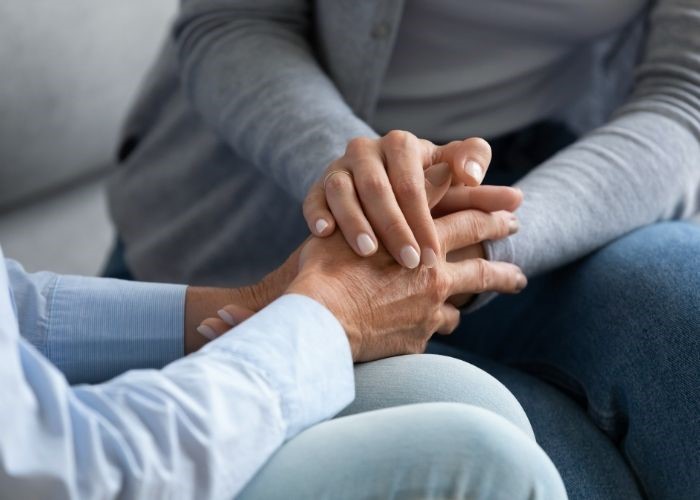A stroke is terrifying for all involved, but thankfully, there are ways you can support your loved one after a stroke to help the healing process.
No one is ever prepared for a stroke, and the news is frightening. As someone who loves the one who has endured the stroke, you may feel helpless and unequipped to be the one supporting your loved one. Although it’s true you may be inexperienced in supporting someone after a stroke, as you learn more about it and find helpful avenues, you’ll become better equipped—and your loved one will be thankful you did. Let’s discuss how to support a loved one after a stroke.
Gather Information
Gather as much information as possible about strokes. There are different types, and everyone is affected differently. Talk with the patient’s doctors and write down information they give you. Hop online and do your own reading about the variations of stroke and how your loved one may be feeling. Information is knowledge, and knowledge leads to confidence as you strive to become the best possible supporter.
New Ways To Communicate
Depending on the severity of the stroke, you’ll possibly need new ways to communicate with your loved one. This is frustrating at first, but with a little trial and error, it’s well worth it to find a way to communicate with each other.
For some, it’s writing or typing instead of talking. For others, it may be speaking slowly or even using sign language until they regain better use of their vocal abilities again.
Listen and Offer Emotional Support
Certainly, for those who suffer the stroke, it’s terrifying. They’ve suddenly gone from a normal life to needing special attention and care. This change is draining emotionally. Nothing prepares someone for it.
Offer a listening ear, a shoulder to cry on, and whatever else your loved one needs. Encourage them when you can, but also look for cues for the days they may just want to vent and know you understand and are on their side.
Find the Best Therapies
There are many therapies available to stroke victims, and your loved one’s doctor will suggest what they feel is best. However, they usually consist of certain types of physical therapy such as walking, weights, and even hippotherapy, which uses the natural gait of a horse to help stroke victims improve movement. Whatever the form, physical therapy is designed to help the patient regain the use of motor skills that were damaged during the stroke. If speech is affected, then speech therapy is also necessary.
Stay Close With the Caregiver
Caregivers are often drained, and we don’t realize it. Stay in touch with your loved one’s regular caregiver if it isn’t you. They are able to relay important information to you about the patient’s progress, and they appreciate your interest.
Besides that, caregivers need a break. See how you can help out with needed breaks and how you can support the caregiver.
Taking the time to learn how to support a loved one after a stroke is the first direction in their road toward healing. It’s a scary experience, and it’s completely normal to feel helpless at first. Be patient, and in time, your new routine and support for your loved one will pay off.
The material in this blog is for educational purposes only. It is not intended to replace, nor does it replace, consulting with a physician, lawyer, accountant, financial planner or other qualified professional.

